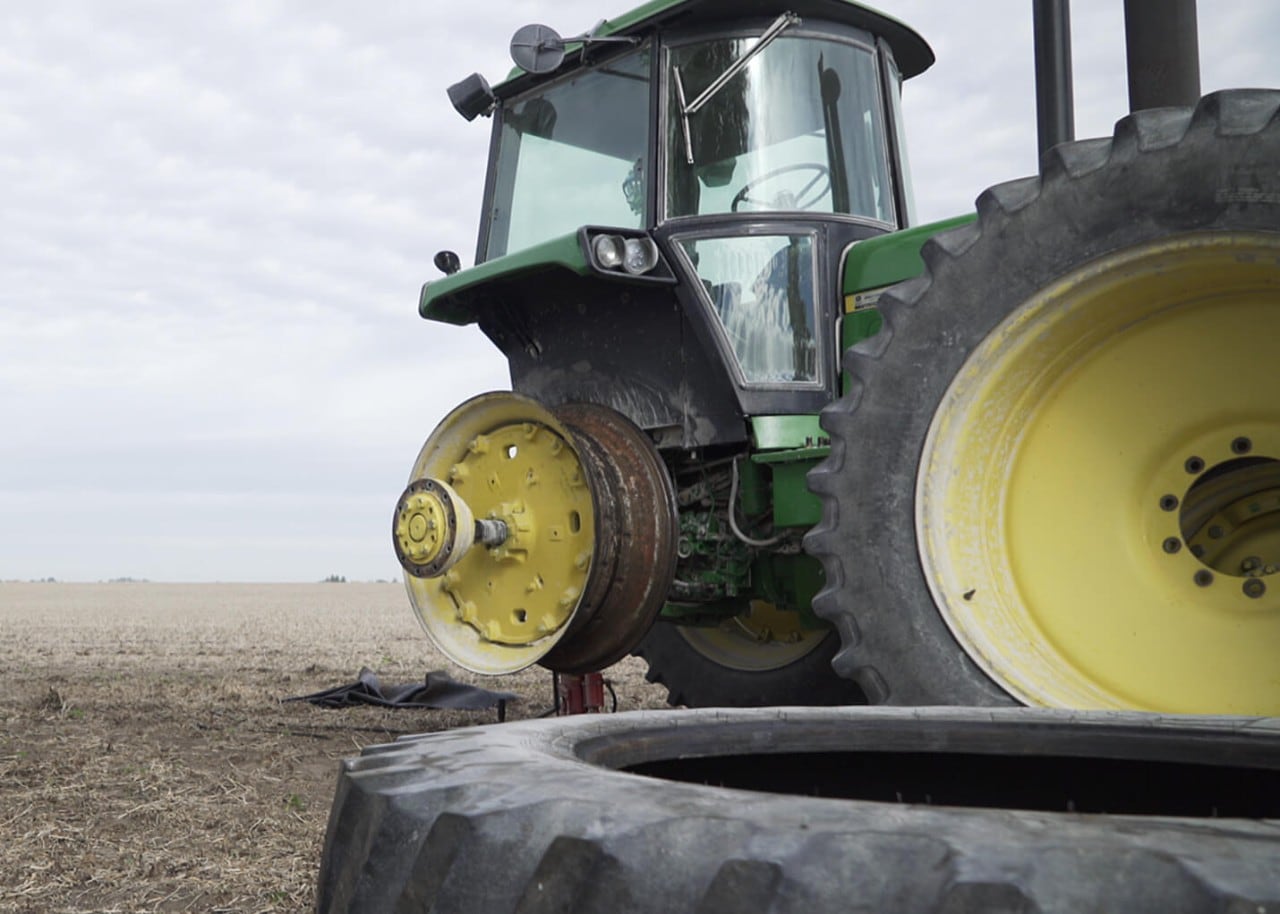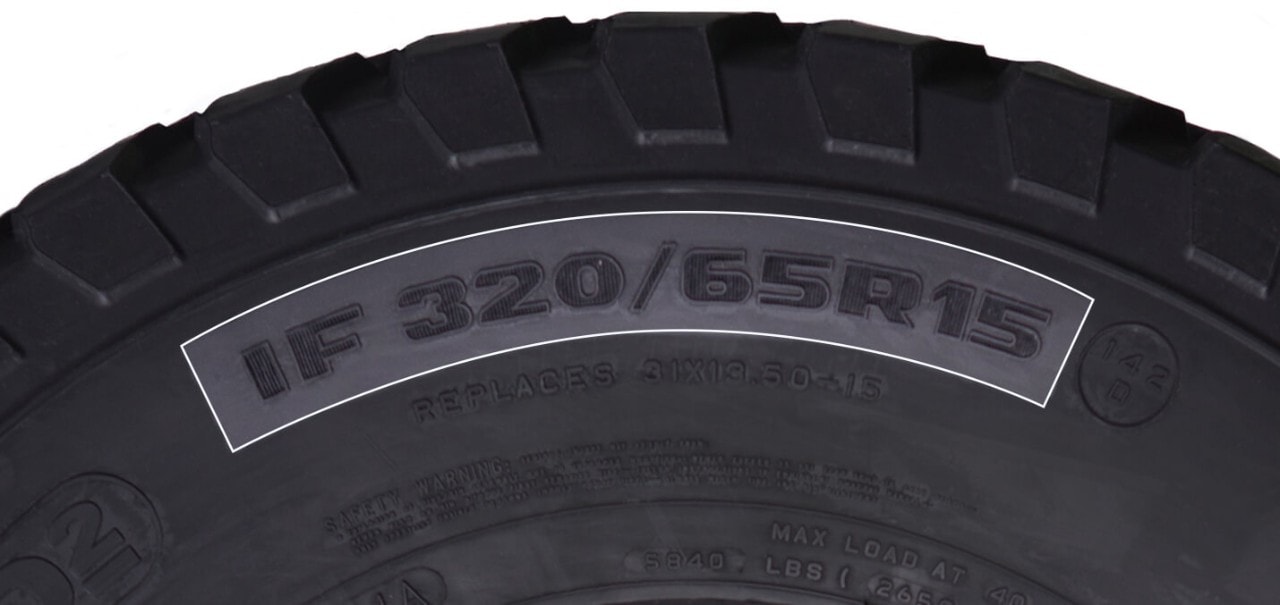MEASURING TRACTOR TIRE SIZE: WHAT YOU NEED TO KNOW
Tractors and implements require specific tire sizes, constructions, and tread patterns to keep them operating at peak efficiencies. Understanding how the tractor tire sizes are marked and the meaning of all the numbers and letters will help you have a more informed conversation when you are talking to your trusted tire dealer.

WHY TRACTOR TIRE SIZE IS IMPORTANT
If you install the wrong tractor tire size, you can render even the best tractor useless. On Mechanical Front Wheel Drive (MFWD or FWD) tractors, the rear and front tires must maintain a proper rolling circumference ratio. If the ratio between the front and rear tires change, it can cause damage to the driveline or reduce the wear life of the tire. It is acceptable to increase or decrease the overall diameter on the rear tires, but the front tires will also need to be changed. Articulated 4WD tractors have the same diameter tires on the front and rear axles; On Articulated 4WD tractors, if you increase the diameter of tires on the rear axle, the same increase in diameter needs to occur on the front axle.
FINDING TIRE SIZE ON THE SIDEWALL
All Firestone Ag tires include the tire size on the sidewall. The tire size will be either represented in Standard or Metric tire size nomenclature; Check out Firestone’s helpful ag tire sizing chart on how to read all tractor tire sidewall markings.

HOW TO MEASURE TRACTOR TIRES BY HAND
If you can’t read the tractor tire size from the sidewall, you can manually measure the tire. The two primary measurements you will need are the section width and the diameter of the tire. To measure these items, it is best to properly take all the weight off of the tire and inflate it to the rated inflation pressure
HOW TO MEASURE TIRE SECTION WIDTH
For the tire’s section width, you want to measure the maximum width of the tire which is usually found in the sidewall not the tread. Since this measurement is hard to measure with just a tape measure, we recommend a wide pair of calipers. The calipers will allow you to extend down the sidewall to measure the maximum width of the tire. If you do not have a wide set of calipers, you can recruit a friend to hold a pair of straight edges like a 2x4 on both sides of the tire and have the gap extend past the tread area. You can then take a tape measure and measure the gap between the 2x4s. This measurement will be the section width of your tire.
HOW TO MEASURE TIRE DIAMETER
For the tire’s diameter, you want to measure the circumference at the centerline of the tire. The easiest way to measure this distance is using a string. Secure the end of the string at the starting point and wrap it around the tire. Mark the string where it intersects the starting point. Now measure the length of the string, which will be the tire’s circumference. Divide the circumference measurement by 3.14 and that value is the diameter of the tire.
Once you have your tractor tire dimensions, you can use the Databook to find a tire with a similar diameter and section width. Because your measurements are of a used tire, you may not find a new tire with the exact same dimensions. Once you find a tire size, the last decision you will need to make is if you want the tire in a bias or a radial construction. To do this, you need to see if it is marked as radial, with an “R” on the sidewall.
HOW TO READ A METRIC TRACTOR TIRE SIZE
The United States is one of the only countries that does not use the metric system as the national standard; instead, using the American standard unit of measurement. Because of this, there will be some tires where you will need to understand the metric markings and their equivalent measures in American Standard numbers to get the right size of tire to replace your current tires. Not only are conversions required, but the sizes are also listed differently than you would see on American labeled tires.
The first number listed on a metric tire is the width in millimeters.
The second number on a metric tire is to calculate the sidewall measurement. The sidewall height is a percentage of the width of the tire. This second number is that percent. The sidewall height or "aspect ratio" of a 285/75/R16 tire is 75% of 285mm.
The third number (preceded by an "R" if the tire is radial) is the wheel diameter
The formula to use when converting your ag tractor tire size from metric to American standard:
Width in inches = section width / 25.4
Section Height in inches = Width in inches X Aspect Ratio (%)
Because getting the correct ag tractor tire size is so critical to the performance of your tractor, if you’re still not sure where to start, or have questions, for assistance, you can always speak with a professional at any FIRESTONE AG CERTIFIED DEALER.
